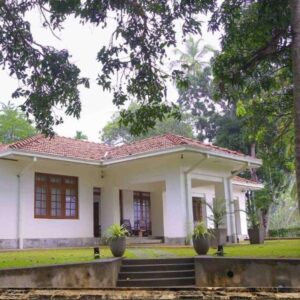Raddegoda Walawwa is one of the traditional walauwas (manor houses) in Sri Lanka, representing the island’s rich cultural and architectural heritage. While it may not be as widely known as some of the more prominent walauwas, Raddegoda Walawwa holds historical significance as a symbol of the social and economic stature of the family that resided there.
Historical Background
Raddegoda Walawwa was likely built during a time when walauwas were central to the social and political life of rural Sri Lanka. These manor houses were typically owned by influential families, often of aristocratic descent or those holding significant local power. The head of the family would have been a key figure in the community, often acting as a chieftain or local leader responsible for administering justice, managing land, and overseeing agricultural activities.
Architectural Features
The architecture of Raddegoda Walawwa would reflect the traditional style of Sri Lankan walauwas. This includes large, open spaces designed to keep the interior cool, high ceilings, and extensive verandas. The walawwa likely features intricate woodwork, especially in elements like doors, windows, and pillars, which were common in such structures.
The house would have been built with local materials and craftsmanship, showcasing the skills of the artisans of the time. The design might also include a central courtyard, which was a common feature in walauwas, serving as a gathering place for the family and their guests.
Social and Cultural Role
Walauwas like Raddegoda were not just residences but also centers of economic and social life in their regions. The manor house would have been a focal point for the surrounding community, where decisions affecting the local area were made. The family living in the walawwa would have had considerable influence over the local population, and the walawwa itself would have been a symbol of their status and power.
Present Day
The current state of Raddegoda Walawwa may vary, depending on how it has been preserved or repurposed over the years. Some walauwas in Sri Lanka have been maintained as heritage sites, while others have been converted into private residences, hotels, or cultural centers. The walawwa may still be in the hands of the descendants of the original family or could be a site of historical interest in the area.
Raddegoda Walawwa, like many other walauwas, offers insight into the social structures, architectural styles, and cultural practices of Sri Lanka’s past, making it an important part of the country’s heritage.









